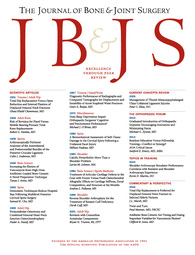
SPINE
Comparison of rigid brace, soft brace, and no brace for osteoporotic compression fractures
J Bone Joint Surg Am. 2014 Dec 3;96(23):1959-66. doi:60 patients over 50 years of age with a stable, acute, osteoporotic thoracolumbar compression fracture were randomized to receive treatment with either no-brace, a soft-brace, or a rigid-brace. The purpose of this study was to evaluate whether treatment with no brace offered similar results to that of 8-week wear of a soft brace or rigid brace, with respect to disability and pain. Patients were followed-up at 12 weeks after injury. The primary outcome was the Oswestry Disability Index score, which showed no significant difference between groups after 12 weeks. Furthermore, secondary assessments of back pain and progression of anterior body compression were also similar among groups.
Unlock the full ACE Report
You have access to {0} free articles per month.Click below to unlock and view this {1}
Unlock NowCritical appraisals of the latest, high-impact randomized controlled trials and systematic reviews in orthopaedics
Access to OrthoEvidence podcast content, including collaborations with the Journal of Bone and Joint Surgery, interviews with internationally recognized surgeons, and roundtable discussions on orthopaedic news and topics
Subscription to The Pulse, a twice-weekly evidence-based newsletter designed to help you make better clinical decisions
Exclusive access to original content articles, including in-house systematic reviews, and articles on health research methods and hot orthopaedic topics
Or upgrade today and gain access to all OrthoEvidence content for just $1.99 per week.
Already have an account? Log in


Subscribe to "The Pulse"
Evidence-Based Orthopaedics direct to your inbox.
{0} of {1} free articles
Become an OrthoEvidence Premium Member. Expand your perspective with high-quality evidence.
Upgrade Now












































































